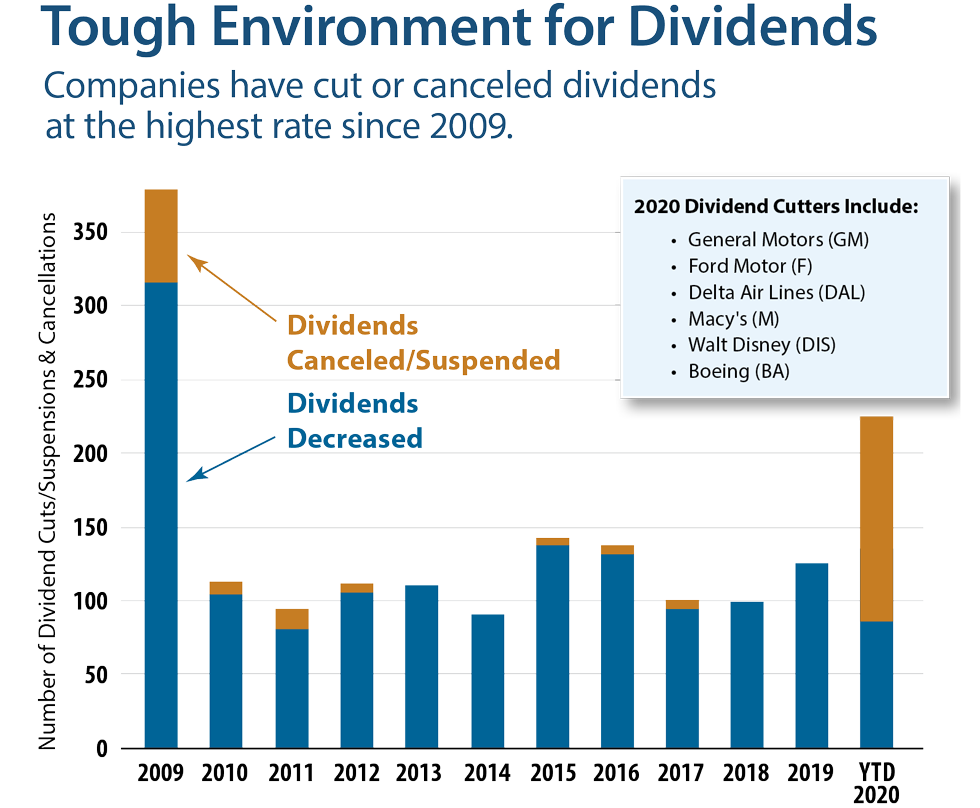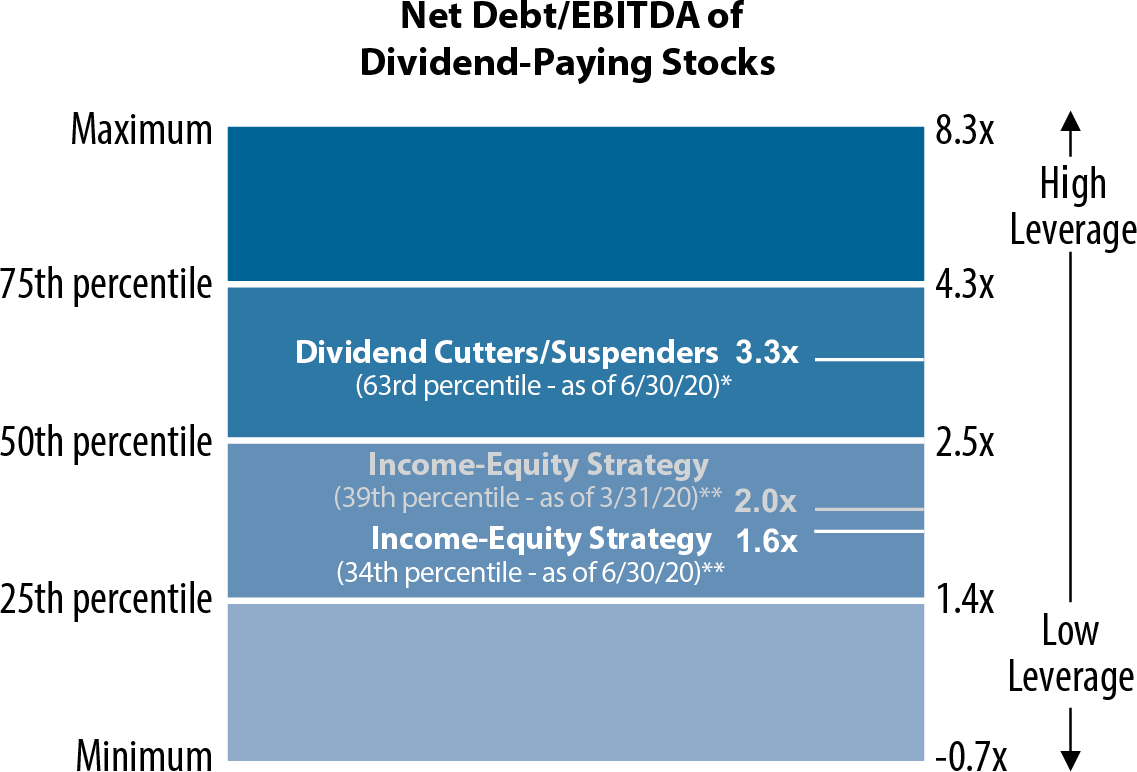Tough Environment for Dividends
Monday, July 13, 2020

Companies have cut or canceled dividends at the highest rate since 2009.
More than 200 US companies announced dividend cuts in the first half of 2020, greater than double what we typically see in a full year. Many of the cutters were well-known companies such as General Motors, Disney, and Boeing. Miller/Howard strategies largely avoided dividend cuts. We had no cuts in our Income-Equity Strategies with one possible exception of Coca-Cola European Partners, a twice-yearly payer, delaying its second quarter dividend until they have better visibility.

As of June 30, 2020.
Source: The Wall Street Journal; S&P Capital IQ; Eikon; FactSet; StreetAccount; Miller/Howard Research & Analysis. Based on US companies and public investment funds (REITs, etc). Year-to-date 2020 dividend data are based on stocks with market capitalizations >$1B, as tracked by Miller/Howard Investments. Data prior to 2020 are sourced from the Wall Street Journal and S&P Capital IQ.
As of June 30, 2020, GM, F, DAL, M, DIS, BA were not held in Miller/Howard's Income-Equity Strategies.
Our success in largely eluding dividend cuts comes principally from avoiding stocks with high leverage. The chart below shows the cumulative distribution of leverage, measured by Net Debt/Trailing EBITDA, for the entire dividend-paying universe (excluding financials). As the chart shows, median leverage for the universe was 2.5x, a half-turn higher than our Income-Equity Strategy at the end of Q1. Over the course of the second quarter, we moved our Income-Equity holdings towards firms with less leverage, ending the quarter with a weighted average of 1.6x.
In contrast, dividend cutters on average had much more debt, averaging 3.3x. The dividend cuts in 2020 have confirmed Miller/Howard's belief that dividends from highly-leveraged companies are not reliable.

As of June 30, 2020.
Source: Eikon; Bloomberg; MHI Research & Analysis.
Bloomberg Screen: All US-traded equities with a market cap >1B and with a dividend yield >0% on 12/31/2019 and were paying a dividend on 3/31/2020. Top/Bottom 5% of outliers are excluded from both cutters/suspenders universe, and all dividend-payers universe. Financials are excluded. Stocks where data is not available are excluded.
* Simple average
** Weighted average
Dividend cuts had a big impact on stock performance. Dividend cutters were down 39% over the first half of the year. On average, the dividend cutters fell 49% prior to announcing the cut, as the market anticipated what was coming. On average the cutters rebounded somewhat following the cut, along with the rest of the market. To answer a common question: no, buying a stock ahead of a dividend cut doesn't lead to a single certain result. Some stocks will continue to plummet while others rally. What's clear is the importance of staying away from companies that could be forced to eliminate their dividend. This remains a pillar of Miller/Howard's approach to active management of dividend equity portfolios.
Read the 2Q20 Quarterly Report ►
DEFINITIONS
- Earnings Before Interest, Taxes, Depreciation, and Amortization (EBITDA)—A non-GAAP measure used to provide an approximation of a company's profitability. This measure excludes the potential distortion that accounting and financing rules may have on a company's earnings; therefore, EBITDA is a useful tool when comparing companies that incur large amounts of depreciation expense because it excludes these noncash items, which could understate the company's true performance.
- Net Debt to EBITDA—A measure that computes the company's ability to pay off its debt by utilizing the earnings before interest, taxes, depreciation, and amortization (EBITDA).
